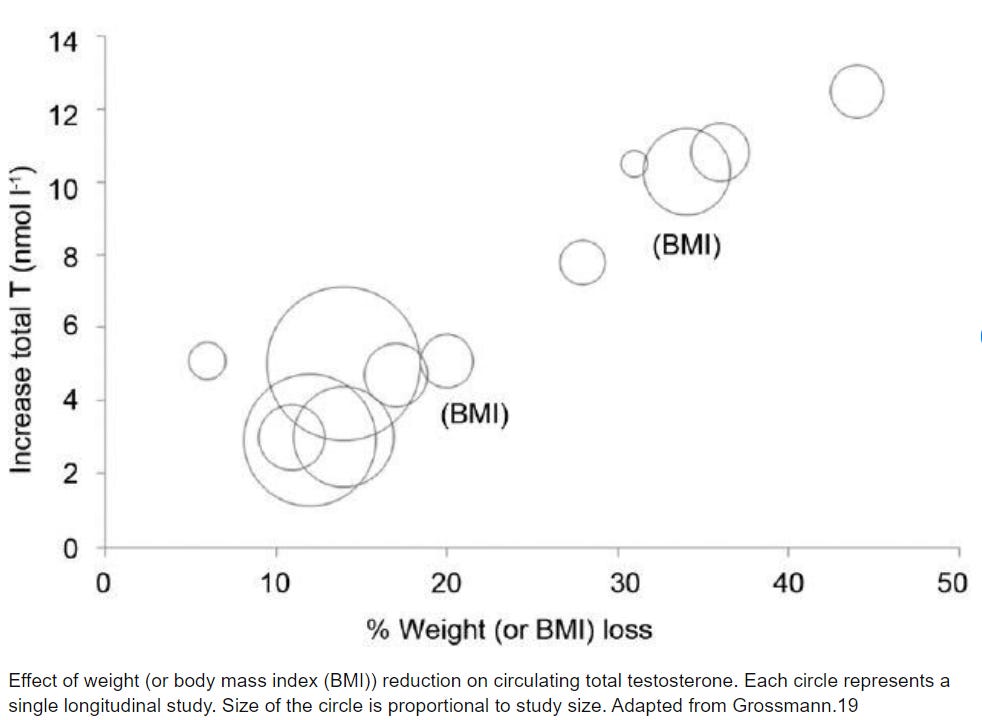More Calories Less Crime
Some criminals are getting too fat to offend.
Higher BMI correlates with a lower parental socioeconomic status, lower intelligence, lower number of years of education, and lower family income. Since all those things positively correlate with a higher rate of crime1, one would expect people with higher BMI to have a higher rate of crime.
Yet, in a sample of 43,992 male offenders from Austria, we see that a higher BMI is associated with a significantly lower risk of arrest for a variety of offenses.2 with each upwards movement of 5 in the BMI index from the category of people with a BMI of 18.5-25 the odds of committing a violent crime (“against life and limb”) decreases by about 20-25%.
The same pattern is seen in a sample of 1019 inmates incarcerated in the Tennessee and Illinois state penitentiaries between 1831 and 1892.3
One obvious explanation for this pattern is that heavier people are unhealthier and therefore find it more difficult to commit various strenuous activities that are involved in criminal offending (i.e. assaulting people, running away from the cops). Aside from physically constraining certain activities, having a higher body weight lower the desire to be active by making physical activity less comfortable45.
Another possible causal pathway is thru the relationship between testosterone, crime and weight. We know that in samples of prison inmates and college undergraduates testosterone levels correlate with criminal offending, particularly violent criminal offending6, we also know that obesity is related to the decline in testosterone which is related to the feminization of society. Perhaps the best evidence of a causal relation between BMI and testosterone is that in longitudinal studies tracking weight loss and testosterone levels, higher rates of weight loss are related to greater increases in testosterone.7
This should mean that as people gain weight they would experience lower rates of testosterone and lower rates of offending.
It is also notable that the obesity epidemic was taking off just as crime rates in the U.S were declining, Men aged 20-40 had a BMI of between 23-26 for cohorts born between 1940-1960 but latter cohorts had a BMI of 24-28 with faster raises in BMI toward the higher value during this age span, increases in the obesity rates were also faster in those of lower socioeconomic status which is where the crime is.8
All of this could mean that the obesity epidemic is an unrecognized factor in the 1990s decline in crime aside from obvious factors such as increases in the rate and length of imprisonment, as a matter of fact since long-term imprisonment causes weight gains in prisoners9 the two factors could interact with one another.10
Correlation matrix from the GSS of 907 people, BMI negatively relates to:
educ - number of years of school
realinc - family income
wordsum score - a verbal intelligence test
pasei10 - father’s socioeconomic status
masei10 -mother’s socioeconomic status
The result for wordsum is weak but we see a more robust result between cognitive ability and BMI in this study of 12,250 siblings:
This can be seen in surveys of time use by BMI “time spent watching television/videos are positively linked to BMI. For women only, time spent in food preparation and clean-up is inversely related to BMI while for men only, time spent sleeping is inversely related to BMI. Models”
Postnote: Wanted to put something about dounts being a cops best friend but couldn’t find the right place.









